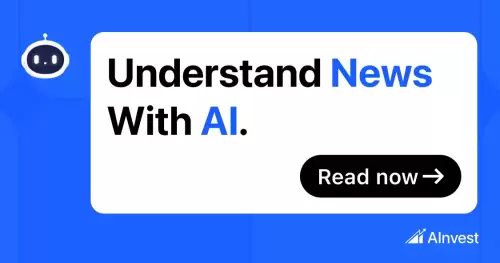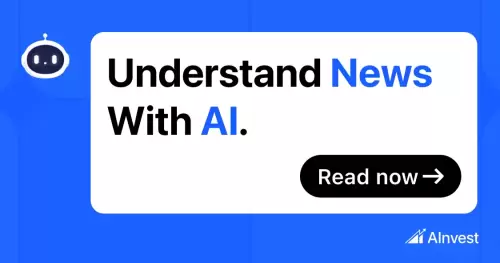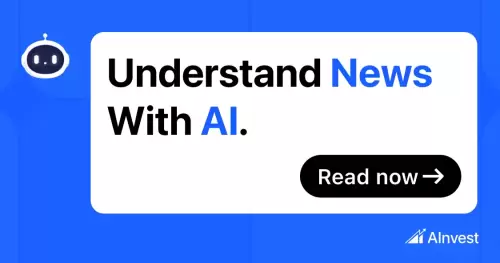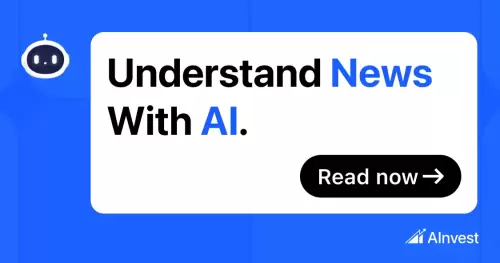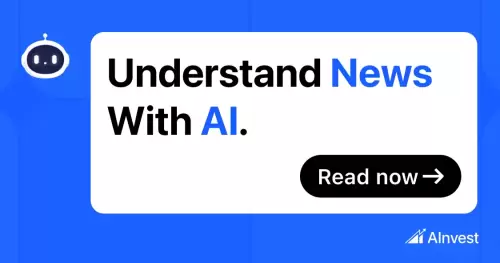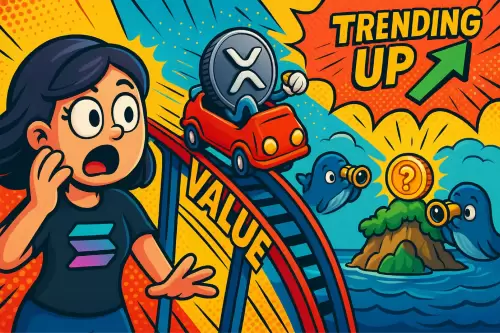 |
|
 |
|
 |
|
 |
|
 |
|
 |
|
 |
|
 |
|
 |
|
 |
|
 |
|
 |
|
 |
|
 |
|
 |
|
互聯網和移動設備的現代技術曾經是民主和解放工具,已成為監視和利潤的引擎,重塑社會

Modern technology, often heralded as a tool for democracy and liberation, has become largely an engine of surveillance and profit, reshaping society to benefit corporations more than communities. As Alex Karp argues in The Technical Republic, the engineering focus has shifted from deep tech that strengthens societies to consumer tech that serves corporate interests.
現代技術通常被宣告為民主和解放的工具,在很大程度上已成為監視和利潤的引擎,使社會重塑社會比社區更受益。正如亞歷克斯·卡普(Alex Karp)在技術共和國所說的那樣,工程重點已經從增強社會的深度技術轉變為為企業利益的消費者技術。
Artificial intelligence, now poised to reshape society, stands at a crossroads: will it follow this path or chart a new one.
現已準備重塑社會的人工智能站在一個十字路口上:它會遵循這條道路或繪製新的道路。
Crypto, promised as a decentralized revolution, has largely failed to deliver, mired in speculation and unfulfilled promises. However, a new opportunity emerges: decentralized artificial intelligence. By combining crypto’s infrastructure with AI’s transformative potential, we can redeem crypto’s vision and ensure AI serves the greater good, not corporate greed.
被保證為一場分散革命的加密貨幣在很大程度上未能交付,陷入了猜測和未實現的承諾。但是,出現了新的機會:分散的人工智能。通過將加密貨幣的基礎設施與AI的變革潛力相結合,我們可以兌現加密貨幣的願景,並確保AI有助於更大的利益,而不是公司貪婪。
The problem: Crypto’s stumbles and AI’s peril
問題是:加密的跌倒和AI的危險
Blockchains and cryptocurrency promised to disrupt industries by eliminating middlemen and streamlining systems like finance and supply chains. Bitcoin (BTC) and stablecoins have found traction, but smart contracts, once revolutionary, have fueled mostly speculative DeFi projects and meme coins rather than real-world solutions. The gap between crypto’s ambition and reality has eroded trust.
區塊鍊和加密貨幣有望通過消除中間人和精簡系統(如金融和供應鏈)來破壞行業。比特幣(BTC)和Stablecoins已經發現了牽引力,但是曾經革命性的智能合約主要助長了投機性的Defi項目和模因硬幣,而不是現實世界中的解決方案。加密態度與現實之間的鴻溝侵蝕了信任。
AI could end up reshaping everything—from healthcare and science to the way we govern society. But when just a few companies control that kind of power, there’s a real risk of deepening inequality, increasing surveillance, and even steering public opinion.
AI最終可能會重塑一切,從醫療保健和科學到我們管理社會的方式。但是,當只有少數公司控制這種權力時,就會存在加深不平等,增加監視甚至指導公眾輿論的真正風險。
If you look back, technologies like the internet or nuclear energy were developed with heavy government involvement. That’s not the case with AI. It’s largely in the hands of private corporations now, and that brings up a pressing question: Is this technology being built for the common good, or just for profit? Without intervention, AI could follow social media’s path, exploiting users rather than empowering them.
如果您回顧過去,諸如互聯網或核能之類的技術是通過大量政府參與而開發的。 AI並非如此。現在,這主要掌握在私人公司的手中,這提出了一個緊迫的問題:這項技術是為共同利益而建立的,還是只是為了利潤?沒有乾預,AI可以遵循社交媒體的道路,利用用戶而不是賦予他們權力。
Why decentralization is essential for AI
為什麼權力下放對於人工智能至關重要
The breakthrough here is not just technical, but also economic. In decentralized AI networks, every layer of the AI value chain can be distributed in real time. Data custodians who supply datasets, model architects who publish improved weights, and application builders who deliver user experiences can all earn a proportional share of on-chain rewards. Because every transaction settles on a public blockchain, everyone can audit who earned what and why, creating radical accountability that proprietary labs cannot match.
這裡的突破不僅是技術,而且是經濟。在分散的AI網絡中,可以實時分發AI值鏈的每個層。提供數據集的數據保管人,發布改進的權重的模型建築師以及提供用戶體驗的應用程序建築商都可以在鏈上獎勵中獲得成比例的份額。因為每筆交易都會在公共區塊鏈上解決,所以每個人都可以審核誰贏得了什麼和原因,創建了專有實驗室無法匹配的根本問責制。
This structure unlocks a level of collaborative and competitive velocity impossible inside a single company. Thousands of independent nodes iterate in parallel, stress-testing and improving upon one another’s ideas and forking the best into new sub-networks. Breakthroughs, therefore, compound rapidly instead of waiting for a quarterly roadmap.
這種結構可以在單個公司內部解鎖一定程度的協作和競爭速度。成千上萬的獨立節點並行迭代,壓力測試和改善彼此的想法,並將最佳的方式分配到新的子網絡中。因此,突破迅速復合,而不是等待季度路線圖。
In short, decentralization rewires AI’s incentives so that rewards and governance flow to the true value creators rather than bottling up inside a single balance sheet. That alignment is the difference between an AI future owned by a handful of companies and one that belongs to all of us.
簡而言之,權力下放會重新定義AI的激勵措施,以使獎勵和治理流向真實價值創造者,而不是在單個資產負債表中裝瓶。這種一致性是少數公司擁有的AI未來和屬於我們所有人的AI未來之間的區別。
Decentralized AI in action
分散的AI行動
Bittensor is one of the examples of decentralized AI solutions. Bittensor is a live, open network where crypto-economic incentives translate directly into better AI. Independent nodes post tasks, share weights, and benchmark one another’s output. Every interaction is logged on-chain, and contributors are paid in native token Bittensor (TAO) or subnet tokens the moment their work moves the frontier forward.
Bittensor是分散AI解決方案的例子之一。 Bittensor是一個現場開放的網絡,加密經濟激勵措施直接轉化為更好的AI。獨立節點發布任務,共享權重和彼此的輸出基準。每次互動都會在鏈上記錄,並且貢獻者以本地令牌Bittensor(TAO)或子網令牌的方式支付,而他們的工作將前沿前進的那一刻。
BitMind, in this economic flywheel, plays the role of a deepfake detector. A swarm of computer-vision models hunts manipulated images and video. Each week, peer nodes re-score one another, and detectors that outperform earn larger rewards. The result is an 88% detection rate, nearly twenty points higher than leading proprietary tools, and real-time adaptation when new deepfake techniques appear.
Bitmind在這種經濟飛輪中,扮演著深泡探測器的角色。一群計算機視覺模型搜索操縱的圖像和視頻。每週,同伴節點互相重新得分,並且遠景的探測器獲得了更大的回報。結果是88%的檢測率,比領先專有工具高近20點,並且當出現新的DeepFake技術時實時適應。
Moreover, instead of one lab dictating what a language model should be, Templar, a decentralized model training, lets anyone supply data, compute, or architectures to optimize training loss. The subnets’ validators determine algorithmically which contributions improve performance, and rewards flow accordingly.
此外,聖殿騎士,分散的模型培訓不是一個實驗室,而是讓任何人提供數據,計算或體系結構來優化培訓損失。子網的驗證器通過算法確定哪些貢獻可以改善性能,並相應地獎勵。
What binds these projects is the same incentive loop: every incremental improvement, whether a cleaner dataset, an improved model, or improved performance, earns its contributor a larger share of emissions. Open-source altruism finally has a sustainable business model.
束縛這些項目的是相同的激勵循環:每一個增量改進,無論是清潔器數據集,改進的模型還是改進的性能,都會為其貢獻者提供更大的排放份額。開源利他主義終於具有可持續的商業模式。
Crypto promised to democratize money but got lost in speculation. Decentralized AI redeems this vision by creating a sustainable incentive and economic model for open-source AI development. If large-scale generalized intelligence will shape the next century, ensuring its rewards are broadly shared may become crypto’s most important, and most achievable legacy.
加密貨幣承諾將資金民主化,但在投機中迷失了方向。分散的AI通過為開源AI開發創建可持續的激勵和經濟模式來兌現這一願景。如果大規模的廣義情報將在下一個世紀塑造,那麼確保其獎勵得到廣泛共享可能會成為加密貨幣最重要,最能實現的遺產。
Ken Jon Miyachi is the co-founder of BitMind, a company at the forefront of developing pioneering deepfake detection technology and decentralized AI applications. Prior to founding BitMind, Ken served as a software engineer and technical lead at leading organisations such as NEAR Foundation, Amazon, and Polymer Labs, where he honed his expertise in scalable technology solutions. He has written several academic research publications on blockchain from his work at the
Ken Jon Miyachi是BitMind的聯合創始人,BitMind是一家開發開拓性的DeepFake檢測技術和分散的AI應用程序的最前沿的公司。在創立BitMind之前,Ken曾在近基金會,亞馬遜和Polymer Labs等領先組織的軟件工程師和技術負責人,在那裡他磨練了他在可擴展技術解決方案方面的專業知識。他從他的工作中寫了幾本關於區塊鏈的學術研究出版物
免責聲明:info@kdj.com
所提供的資訊並非交易建議。 kDJ.com對任何基於本文提供的資訊進行的投資不承擔任何責任。加密貨幣波動性較大,建議您充分研究後謹慎投資!
如果您認為本網站使用的內容侵犯了您的版權,請立即聯絡我們(info@kdj.com),我們將及時刪除。
-

- AltCoin輪換,智能貨幣和投資趨勢:有什麼交易?
- 2025-08-04 12:00:48
- 深入探討山寨幣輪換,智能貨幣運動以及加密貨幣的最新投資趨勢。發現哪些山寨幣在浪潮以及原因。
-

-

-

- XRP Price,Ripple CTO和令牌金融:加密貨幣的紐約分鐘
- 2025-08-04 11:43:30
- Ripple的XRP在監管辯論和象徵性的財務趨勢中表現出了韌性,其CTO和市場分析師的主要見解。
-

- PI硬幣:未來訪問還是早期採用藍調?
- 2025-08-04 11:42:37
- Pi硬幣是未來財務的金票,還是另一個面臨早期採用逆風的加密項目?讓我們潛入嗡嗡聲。
-

- 以太坊清算岩石加密市場:紐約人要做什麼?
- 2025-08-04 11:41:44
- 隨著清算潮的激增,以太坊受到了打擊。這是blip還是更廣泛的趨勢?我們分解了最新的加密市場戲劇及其對您的意義。
-

-

- 比特幣的看漲擴展:解碼布林樂隊和鯨魚賭注
- 2025-08-04 09:31:57
- 比特幣的價格接近$ 114,000,因為貿易商眼球樂隊為看漲的突破。大鯨魚下注為火災增加了燃料。比特幣會爆炸還是燃燒?
-

- XRP,Solana和Whales:解碼加密潮汐
- 2025-08-04 09:30:07
- 深入探討XRP,Solana和Whale活動的動態世界,揭示了塑造加密貨幣市場的最新趨勢和見解。
























































